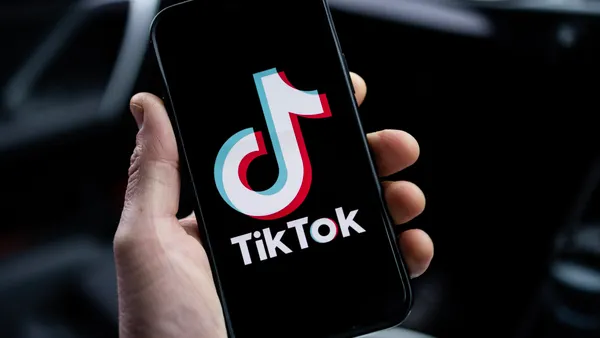Every eCommerce team dreams of being able to accurately attribute every dollar of sales so that they can truly understand the impact of their ad campaigns. That’s why most advertisers use return on ad spend (ROAS) to measure campaign performance. If you can prove that your campaign is tied to an increase in sales, you can prove that your media strategy is effective.
As more channels, marketplaces and ad types come online (and offline), measuring the impact of marketing efforts on sales becomes more and more difficult. Forget omnichannel - we’re in the age of channel proliferation! As retail media growth shows no signs of slowing, brands will need to continue to invest in retail media advertising and will need to prove the impact of those investments across walled garden ecosystems and disconnected platforms. In fact, eMarketer predicts that retail media ad spend will account for nearly a quarter of total media ad spend by 2028.

As retail media grows at explosive rates, more and more retailers are standing up Retail Media Networks. And each one uses its own attribution methodology, which poses challenges for brands looking for a standard measurement of campaign effectiveness.
But brands still must answer the same question to prove that their campaigns are driving incremental sales or new revenue. “Did my ad spend result in an increase in incremental sales?”
Unfortunately, that question is often hard to answer and results in several new questions. Would my customers have purchased without my media’s influence? Who is my customer and what are their shopping behaviors? How do I optimize the ad strategies that deliver more new revenue?
To answer these questions, many brands have turned to a different metric: incremental return on ad spend (iROAS). iROAS is a more sophisticated metric than traditional ROAS and isolates the potential causal impact of marketing efforts on sales. When you use historical campaign performance to understand what drives incremental sales and what doesn’t, you can continue to optimize what works and eliminate what doesn’t - and start to predict the best tactics for the best results.
There are many different approaches to incrementality measurement, but that means there are a lot of myths about incrementality in the market, too. At Pacvue, we’ve spent many years with brands and agencies to drill down into the best way to actually understand the big picture of advertising, customer acquisition and incrementality across retail media campaigns.
As a result, we also know that there are facts and fiction about what incrementality measurement can do and how it works. Here are the top three myths:
1. Retailer attribution models will capture everything
In the world of retail media, there are layers of the customer journey that go beyond just ad exposure: product price, content, competitive trends, organic placements and other factors can all have an effect on iROAS.
The best way to measure incremental sales for retail media is to evaluate campaigns based on multiple variables at a time. But some factors are harder to test than others: Testing the price, promotions and the impact of the buy box can be easy, but if you add in cross-platform exposure, offline sources as well as product detail pages, brand equity, creative variations, reviews and search rankings, you’ll see why incrementality measurement can get so complicated so quickly.
On different retail media networks, shopping behaviors are different, too. Browse-based shopping, past purchases and loyalty programs, list-based shopping, price differences and platform nuances are almost impossible to test. Impulse buys and different news items can influence purchases, too.
So the perfect retailer attribution model is a myth - incrementality measurement can test multiple variables at a time, but it’s impossible to test all the variables all of the time.
That said, a highly reliable attribution model isn’t a myth: it’s a model. The more data on each of these inputs, the better the incrementality measurement.
The influence of purchasing and what drives new customers is much more than a yes or no answer and if you can identify even some of the factors that drive the biggest difference in influence, you can figure out how to measure incremental sales and drive customer acquisition
2. Incrementality measurement only works for a single retailer at a time
Today, the biggest challenge for advertisers isn’t the lack of options for measurement, but the lack of standards across channels, platforms and retailers. It can be a daunting task to measure incremental sales in the first place. Most advertisers might start with one retailer to understand how ad dollars are working across ad types or brands, but this only tests performance within that category.
A modern incrementality test for retail media should offer a comprehensive view of advertising performance across multiple retailers and platforms - and standardize the metrics in a way that makes sense for your business. When you’re measuring incrementality cross-retailer and cross-platform, you can understand not only which channels might be most effective for incremental return on ad spend, but where your ad budget is best spent on multiple levels.
3. iROAS tests can only be done at the campaign level
At the most basic level, you might think of an incrementality test as measuring two campaigns against one another with a single different tactic to understand which tactic works better. Everything else stays the same. This is another myth when it comes to incrementality measurement: it has to be done at the campaign level.
But, as we’ve established, there are a lot more factors that go into identifying incremental sales. Rather than real-time campaigns, iROAS can be deduced from historical data. With the right analysis, you should start measuring incrementality at the brand level. From there, you should ideally be able to understand the variables that affect brand performance such as ad type, campaign tags and the product being advertised.
This helps break down complex campaigns with a top-down approach, so you can see which brands perform best and then move into the other variables.
Incremental sales, incremental customers
Incrementality measurement is a marathon, not a sprint, and should always stay centered on that one primary question: Did the media effectively drive a sale or would it have occurred with my media’s influence?
Know how many variables are involved in measuring your iROAS, advertisers should always focus on that goal. That’s how you can analyze performance and come away with the answers you need to make sure your media drives the best and most efficient results.










